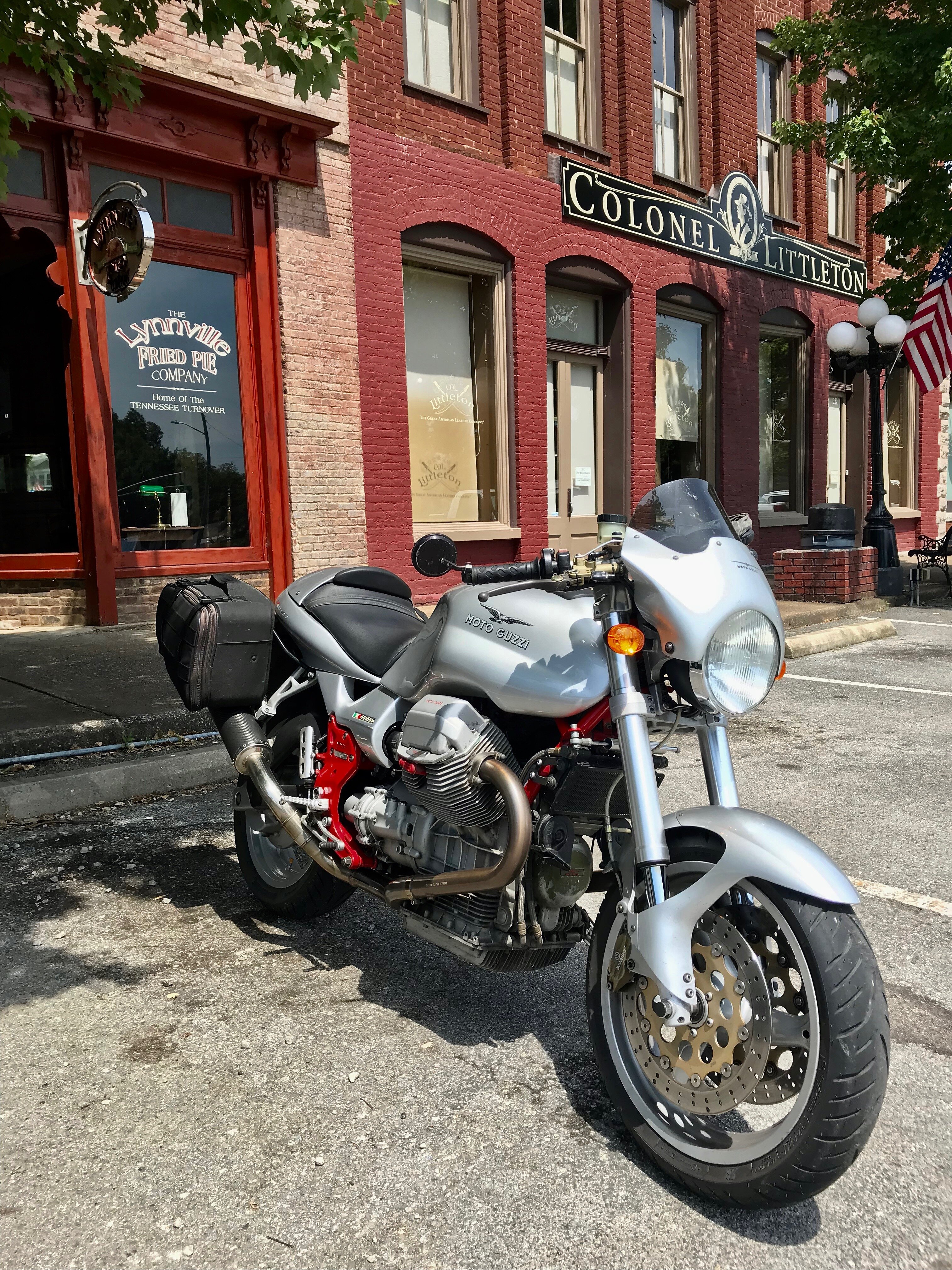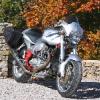-
Posts
20,506 -
Joined
-
Last visited
-
Days Won
1,189
Content Type
Profiles
Forums
Events
Gallery
Community Map
Everything posted by docc
-
I copied the "Image Location" from your duplicate thread and pasted into your reply, then deleted the duplicate thread. (Hope that's okay, bud . . . )
-
@swooshdave . . . . And . . . so . . . what of this swoosh'stang?
-
Good plan! That, Caig Deoxit®, and heat shrink on all the regulator connectors. The new stator has spade connectors to the regulator which feel quite a bit more positive in their connection than the "bullet" connectors that never felt tight. Having groomed all the connectors behind the front subframe together made the stator/regulator swap very approachable without having to pull the tank.
-
Of course, @Guzzi2Go and @luhbo were entirely correct that in spite of all the little things I tried, the battery light flicker at idle after riding remained. Until I finally changed the regulator. Although the charging remained 14.2V or above, it appears the old regulator had "failed in a special way" and was "on its way out" with continuity developing between the red charging wire and the case. I never thought of monitoring for continuity there, but it makes sense. New regulator: no more flicker.
-
Aye, V11 clutch makes for busy times . . .
-
Yes, I typically state valve clearances Intake first, then Exhaust. I'll edit posts to make clear it is opposite.
-
I had to get home to confirm in mm. I believe "world spec" is commonly thought of as 0.20/0.15mm (0.008"/0.006"), Exhaust/ Intake. Thank you, again, for sharing this with the community!
-
Thanks, Meinolf! I’ll “pin” this (probably in “How to ...”). Is it acceptable to adjust V11 valves to the “world spec” with your map?
-
-
Right, the raised one for fuel vapor "recovery" gets captured by a seal under the gas cap when it is closed to create a closed system (assuming the charcoal canisters and one-way check valve are installed). "Tank suck" led to some or all of this being defeated over time. If the greater gas cap seal is functional, water in "the trough" should not enter the the tank unless the drain is blocked and the level is deep enough to spill in when the cap is opened . . .
-
This should drain off through the overflow. Check to make sure the overflow is not blocked or its hose kinked? When using a pressurized hose to spray the Sport, I try to use minimum pressure and volume while being careful not to direst the spray onto sensitive areas (electrics, gauges etc). Then use an electric air blower to get water out of traps and crevices.
-
I've always avoided reading amperage/current with my multi-meters for that reason. The lamp is a great trick I always forget about! No doubt the batteries will discharge from charging level voltages after coming off a charger or being ridden. A healthy AGM looks to take 24 hours or more to fall off into the 90%+ range (12.75-12.84v). When this stator failed, the battery had gone too dead to start the bike. After I repaired the stator and charged the battery, it fell off to ~50% overnight (not characteristic of this conditioned PC545 at all). Disconnecting the red charge wire stopped the discharge. Replacing the regulator definitely stopped the discharge. Testing resistance, I found continuity from the red charging wire to the regulator case/ground under 1k Ω.
-
Well then, when removing the speedometer drive from the gearbox (for whatever reason), be it known that there are TWO thrust washers. The one shown above and the second I was lucky enough to find three years later hugging the magnetic drain plug . . .
-
Well, no puffing. Lots done recently, just trying to get her back to another SpineRaid . . . .
-
Is that a trick question? Of course you should pull it out! I'll "write you a note" . . . (116,912 miles/ 188.568 km as she sits. Hoping to button it all up this evening and make an even 117k miles tomorrow . . .)
-
Hey, my man! Great to see you on! Just here milking this old Sport for all she's worth. And then some! At the very least, I've learned how to get to the front UNI!
-
Probably much closer to the jagged edge: Guzzis .... or strip-pers.
-
Third batch, yah? First gen: zinc chromate finish, second gen: black powder coat, third gen: ?? "Collect them all! "
-
In my sometimes awkward, or even embarrassing, position of calling back over my shoulder to other V11-ers to look out for someting-or-another, the front U-joint has remained an enigma. No doubt, the access to the nasty bugger changed with the LongFrame (for the better) in 2002. We know, now, that the spine frame, itself, made its new length at the headstock while the swingarm and frame side plates remained unchanged. The only thing I can see, or propose, is that the redesigned, "braced" rear lower subframe allows the swingarm to tip down ever so slightly more than the early un-braced subframe giving just enough clearance to get a modified grease gun contraption on (and off) the Zerk. Like many others with a ShortFrame (RedFrame or Rosso Mandello), I resigned myself to removing the swingarm every third rear tire (about 12,000 miles/20.000 km for me). It is really a straightforward prospect. With a lift and proper jacking, tie-downs, light, tools, time, and an air conditioned space with a coffee maker and a beer cooler . . . Also a great opportunity to address and handful of other important tasks: rear brake bleed (nipple up!), clutch bleed, clear the gearbox vent, inspect and rotate the swingarm bearings, inspect the torque reaction rod bushings, inspect the shock eye (lube its bushing and grease the pivot bolt), and ABOVE ALL: grease That Bloody Farking Front UNI Joint! Whether I did not get to mine often enough or it just went as long as it could before freezing in one direction, who knows. But a U-joint with one direction of motion becomes a J-joint. [cue docc, calling back over his shoulder: "Grease that bloody, farking front UNI, boys!" (even if you have to pull your swingarm . . .)]
-
Thanks for bringing this to light, Lucky Phil! True that bubbles start to form in water at 70C. Those bubbles (of water vapor) don’t readily rise to the surface at that temperature, so likely would have a hard time escaping something more viscous like motor oil. Seems motors stored in dampness and high humidity for longer periods would benefit from the higher operating temperatures and/or longer rides. Given the choice, I recommend the longer rides!
-
Finally, a clinically derived solution to properly treat That Bloody Farking Front UNI Joint on of the early ShortFrame V11 . . .
- 105 replies
-
- 10
-

-

-
Is this our dear @belfastguzzi ? Sure do miss his coming about and keeping us cheered up!
-
Splitting the Extender posts to that topic . . . Stand by in the Transporter Room . . .





